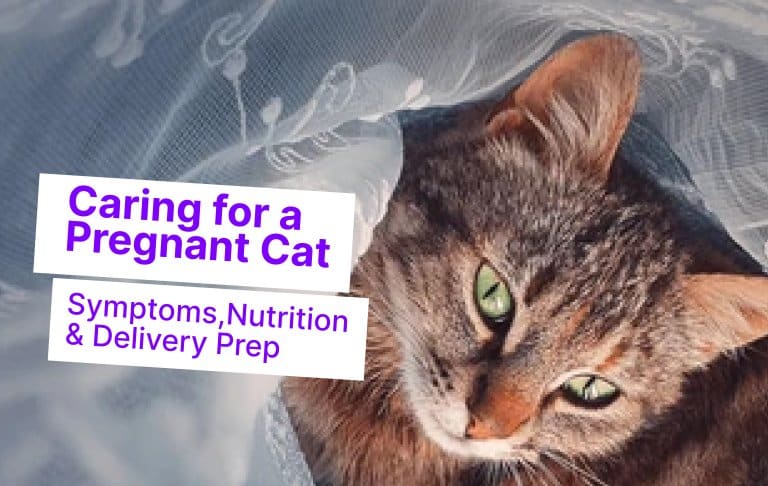Pet grief is a silent ache that ripples through your home, which often goes unnoticed. You know your pet’s heart, the eager wag when you grab their leash, the soft purr as they nestle close. But when their companion is gone, something shifts: a lingering stare at an empty bed, a slower step. I saw this in my cat, whose playful spirit faded after her dog friend passed, her grief clear only after a vet’s insight. Many pet owners miss these signs of pet grief, as animals hide their sorrow, driven by instincts to conceal weakness. Your love and gentle examination can uncover their silent mourning.
This guide is a gentle embrace, helping you understand how to help a grieving pet by recognizing their heartache. We will explore why pets hide grief, subtle signs, how grief shows in different animals, when to call the vet, ways to track healing, and more. Start today by observing your pet closely; your care can ease their pet grief. Discover more pet care tips to support your furry friend.
Why Pets Hide Their Grief
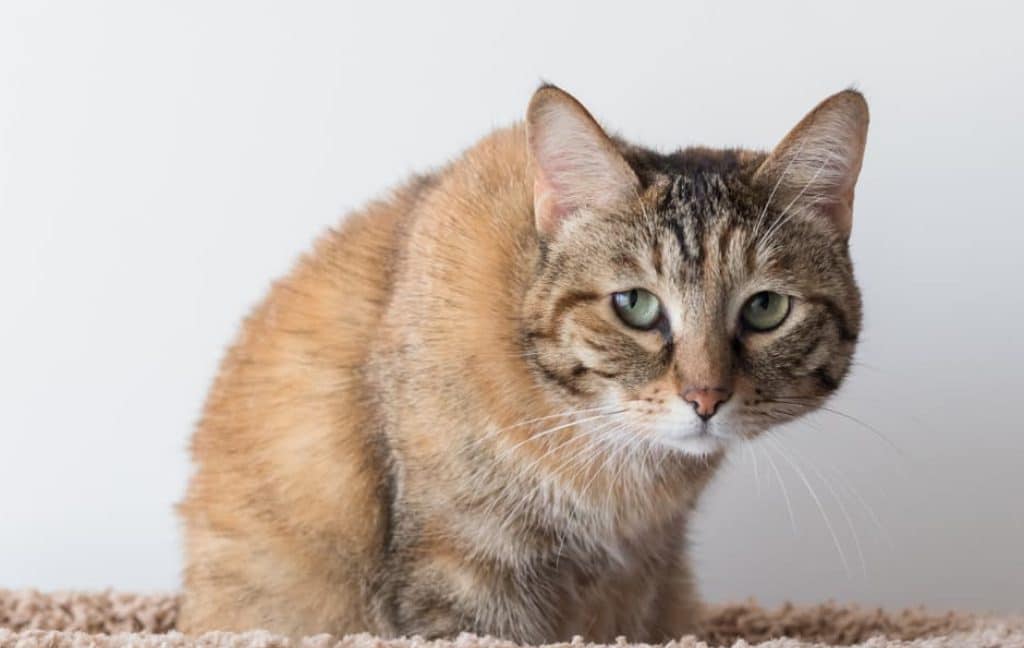
Pet grief is often silent, hidden behind a brave facade. In the wild, showing weakness invites danger, so dogs, cats, and rabbits evolved to mask their sorrow, just as they hide pain. Cats, solitary by nature, are adept at concealing pet grief. Dogs, like loyal retrievers, may continue routines despite a heavy heart. This instinct to hide pet grief protects them, but can leave their sorrow unnoticed at home.
A dog stopped chasing his ball after his feline housemate passed. His owner thought he was tired, but it was grief. Many owners miss signs of pet grief until they deepen, leaving pets to suffer quietly. Your pet isn’t hiding from you; they’re shielding themselves, unaware you’re their safe place. Recognizing grieving pets and understanding why pets hide grief is the key to their healing and helps you offer comfort early. Learn about pet behaviour changes to support them better.
Subtle Signs of Silent Grief
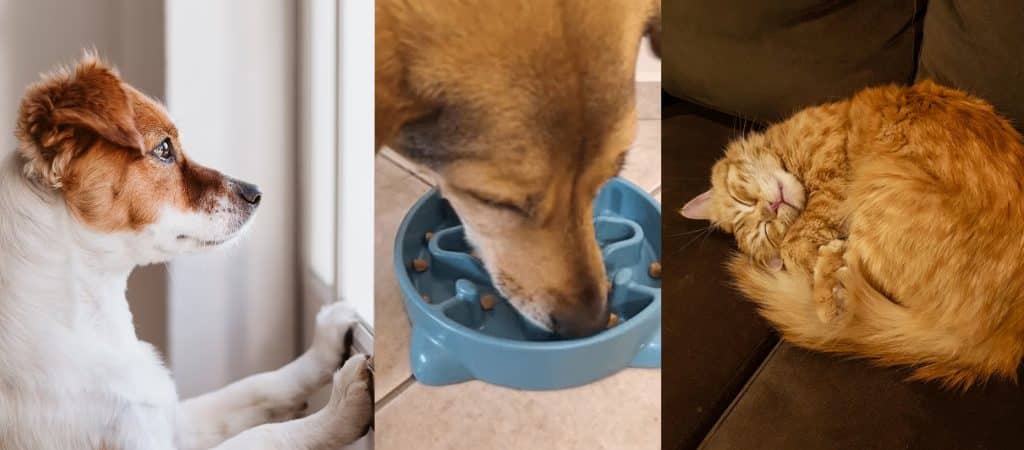
Signs of pet grief can be subtle, slipping through in ways easy to miss. Your pet might not whine, but their heartache whispers through small changes. Picture your dog pausing by their friend’s empty bowl or your cat shying from playtime. These clues of pet grief hide in behaviour, body, and routines. Watch for:
Behavioural Changes:
- Withdrawing, seeking solitude, like hiding under furniture.
- Less interest in cuddles, their warmth dimmed.
- Pacing or sleeping more to escape sorrow.
- Vocalizing, like a cat’s yowl or a dog’s whine.
Physical Hints:
- Sluggish movements or favoring quiet corners.
- Licking a companion’s bed, seeking their scent.
- Hunched posture, lowered head, or searching eyes.
- Slower breathing or trembling, signaling turmoil.
Routine Shifts:
- Eating less, skipping treats.
- Avoiding play or perches.
- Lingering by old spots.
- Greeting with less joy.
A rabbit sat still after losing its mate; this was mistaken for illness, but it was pet grief. These signs are your pet’s quiet plea. Start a pet diary to track these changes and help your grieving pet heal. Read about pet health monitoring for practical tips.
How Grief Shows in Your Pet

Every pet expresses pet grief uniquely. Learning their signals is like hearing their heart’s whisper. Dog grief, cat grief, and mourning in small pets vary, shaped by their nature. Recognizing these signs of pet grief helps you support your companion. Here’s what to notice:
Dogs:
- Tucked tail or pinned ears, holding sorrow.
- Skipping walks or ignoring toys is a sign of grief in dogs.
- Pacing or lingering by their friend’s spot.
- Whimpering when reminded of loss.
Cats:
- Vanishing to corners, like under beds.
- Matted fur from skipped grooming, cat grief.
- Tense whiskers, wide eyes, or vocalizing.
- Refusing to leap onto perches.
Rabbits and Small Pets:
- Fewer droppings or less appetite.
- Hunched, still posture, signaling grief.
- Teeth grinding and pain.
- Dirty fur.
When to Call Your Vet

If signs of pet grief linger over a few days, trust your instincts and call your vet. You’re your pet’s voice and advocate, and waiting can deepen their sorrow and delay their healing. Pet grief doesn’t need to be loud to matter. Vets can rule out health issues mimicking grief, like illness, and suggest comfort strategies. Share changes like:
- They’re hiding more.
- When it started and its frequency.
- Triggers, like passing their friend’s bed.
- Past health or medications.
A dog stopped eating treats after its companion passed. A vet confirmed dog grief and recommended comfort steps. Vets may suggest behavioural therapy or calming aids for pet bereavement. A cat owner found their pet’s yowling eased with vet guidance. Regular check-ups help figure out pet grief early, ensuring your pet’s well-being. Act now to support your grieving pet.
Tracking Grief with a Pet Diary
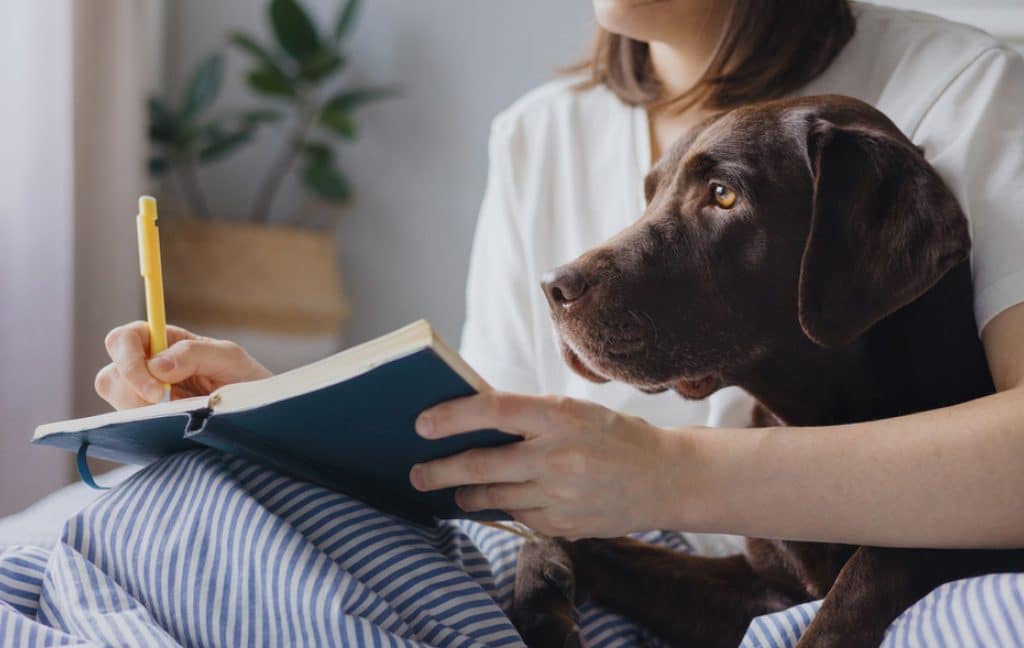
Tracking pet grief with a diary helps spot signs of pet grief early, ensuring your pet gets care. Note:
- Lack of appetite or skipped treats.
- Lingering by old spots or avoiding play.
- Hiding or extra vocalizing, like a cat’s yowl.
Use a notebook, phone notes, or an app to track pet grief signs. Patterns, like sadness near a lost friend’s scratching post, may develop . A cat owner tracked hiding behaviour, leading to a vet visit and comfort strategies. A diary helps you act quickly, easing pet grief.
Supporting Your Pet’s Comfort at Home

Your pet’s silent pet grief tugs at your heart, but small changes at home can wrap them in comfort. Creating a soothing environment eases grieving pets; it can be a dog missing playtime or a cat avoiding leaps. Offer soft bedding with their lost friend’s scent, like a blanket, to soothe their heart, especially for older pets.
Comforting items reduce signs of pet grief like restlessness. A dog settled better with a familiar blanket. Some miss stress-related grief cues, like hunched postures in rabbits. Try these:
- Keep spaces warm and quiet, as noise worsens distress.
- Add low perches for cats to ease cat grief.
- Offer dogs shorter, gentler walks; watch for dog grief signs.
- Provide clean, spacious enclosures for rabbits to avoid stress.
- Consult your vet about foods supporting appetite, as poor eating signals pet grief.
- Ensure fresh water and easy litter access.
- Shower your pet with gentle love, calm strokes or quiet time.
Note that shying from touch is a pet grief sign.
Anticipatory Grief: Preparing for Loss

Anticipatory grief begins when a pet nears the end, casting early shadows. Pets may sense this, showing signs of pet grief before the loss. A dog withdrew as its companion’s scent faded, sensing the change. Owners can ease this by spending quality time with both pets, reinforcing bonds.
Create a “bucket list” for your ailing pet; gentle walks, favourite treats, or cozy naps. This softens the transition for grieving pets. A family took their dog to the park daily, easing its companion’s early grief. Pet insurance can cover palliative care, letting you focus on love. Anticipatory grief affects you too. Prepare by talking to your vet about care options. A rabbit owner planned extra cuddle time, helping both pets. These steps support pet grief before loss. Take action now to create lasting memories with your pets.
Coping with Your Own Grief

Pet loss leaves a quiet ache, echoing your pet’s grief. The empty leash or silent bowl stings. You may feel guilt over their final days or question your actions. These feelings are normal, as pets are family. I kept my cat’s toy on my desk, holding her memory close.
Write a letter to your lost pet, pouring out love. Frame their photo or create a garden stone memorial. Join a pet loss community online or locally to connect with others who understand pet grief. Your healing supports your grieving pet, as they sense your emotions. Start a memorial project today, like a photo frame.
Long-Term Healing for Pets

Healing from pet grief takes time, but grieving pets can find joy again. Long-term healing involves consistent routines, love, and patience. A dog began wagging its tail months after a loss, through daily walks and play. These steps can help rebuild joy:
- Monitor signs of pet grief to ensure progress.
- Encourage play with new toys or gentle activities.
- For cats, offer scratching posts or interactive toys to ease cat grief.
- Dogs benefit from short outings, and rabbits from enriched enclosures.
- Social bonds help ease pet grief; if your pet is ready, consider a new companion after months of healing. A bird owner introduced a new cage mate slowly, reviving chirps.
- Regular vet check-ups ensure pet grief doesn’t mask health issues.
- Support your pet’s long-term healing now with a new routine.
Your pet’s silent pet grief is a testament to their love; with your care, patience, and advocacy, you can heal and take them from sorrow to joy, strengthening your unbreakable bond. Share this guide to help another pet parent ease their furry friend’s grief today.
Creating a Pet Grief Support Plan
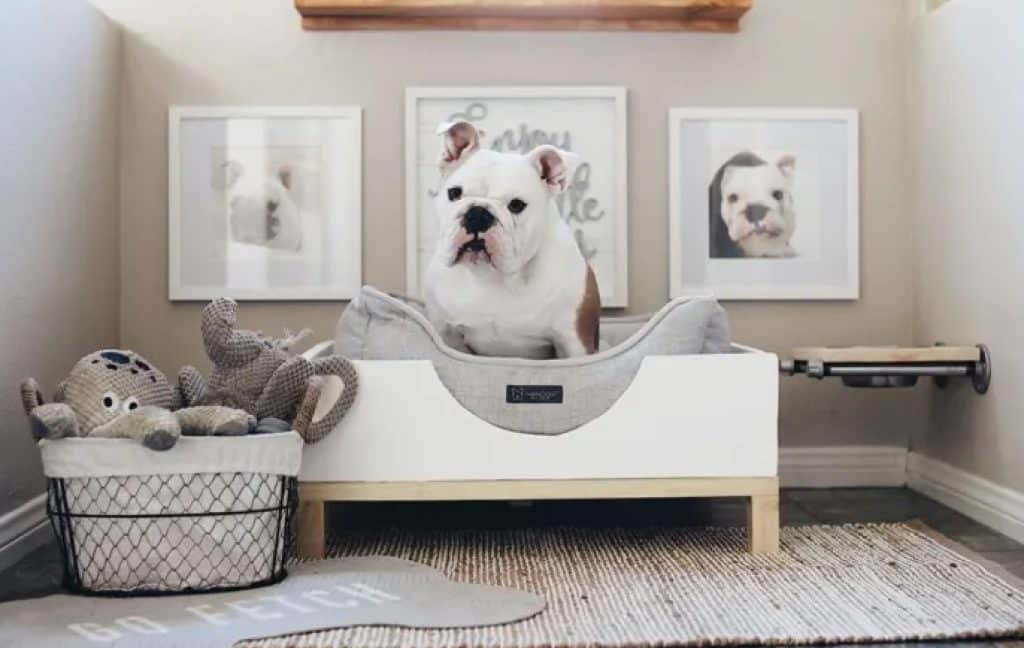
A pet grief support plan helps grieving pets heal with structure and care. These steps will guide you on how to create a pet grief support plan:
- Use a diary to track signs of pet grief.
- Note behaviours like hiding or skipping treats, and adjust routines.
- Add comforting items, like a scented blanket, and maintain feeding schedules.
- Consult your vet for calming aids or dietary tips to ease pet grief.
- Review your plan weekly to monitor progress.
A dog owner used a plan, noting less pacing after adding toys. Create your pet grief support plan today to guide your pet to joy
Building Trust with Your Vet
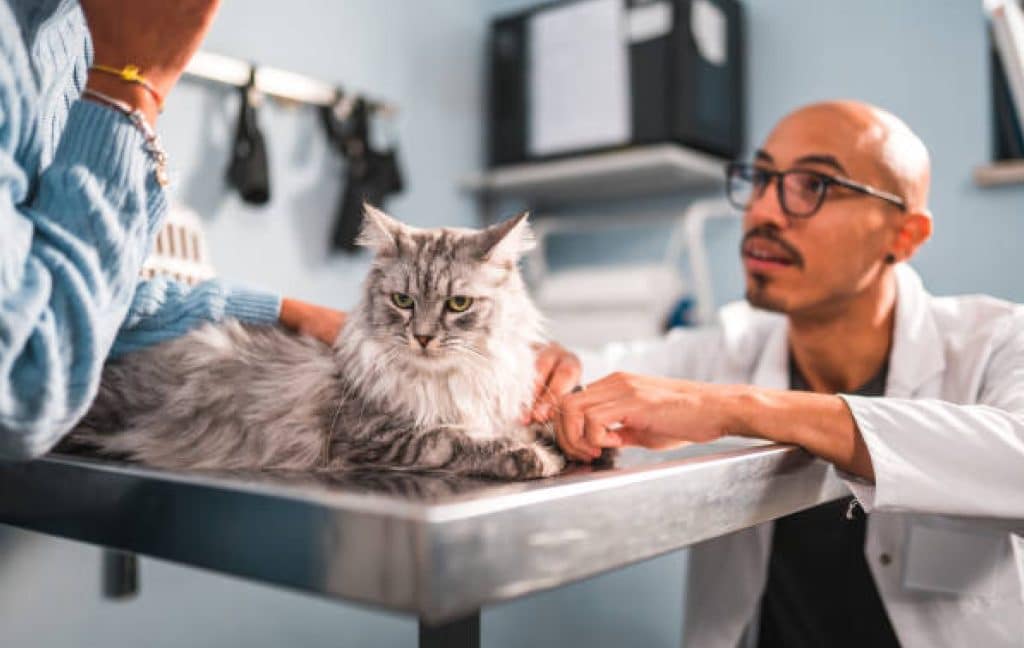
Your pet relies on you to speak for them, and a trusted vet is your partner in easing pet grief. Regular check-ups catch signs of pet grief early, like a cat’s yowling or a dog’s lingering by a door. Opening up more and talking about your pet’s grief builds confidence. You can build trust with your vet by following these steps:
- Share diary notes, like “skipped treats” or “hiding more”, to spot pet grief.
- Be honest about changes; they matter.
- Ask: “Could this be grief?” or “What support helps?” Vets value your honesty and clarity.
- Many vet clinics offer payment plans if costs might cause you worry.
- .A vet suggested a calming aid for a dog’s pet grief, helping it settle.
- Regular visits ensure pet grief doesn’t mask health issues.
- Contact your vet today to discuss your pet’s grief and get support.
Conclusion

Your pet’s grief may not be a bark or meow but a quiet withdrawal or lingering gaze. Being sensitive to grieving pets helps you notice when something’s wrong. Take 10 minutes today to sit with your furry friend. Watch their steps, resting spots, and eyes. If something’s off, don’t wait; call your vet. Give them comfort, healing, and joy as their advocate and companion. Share this guide with a pet parent; your care could ease another pet’s grief.




